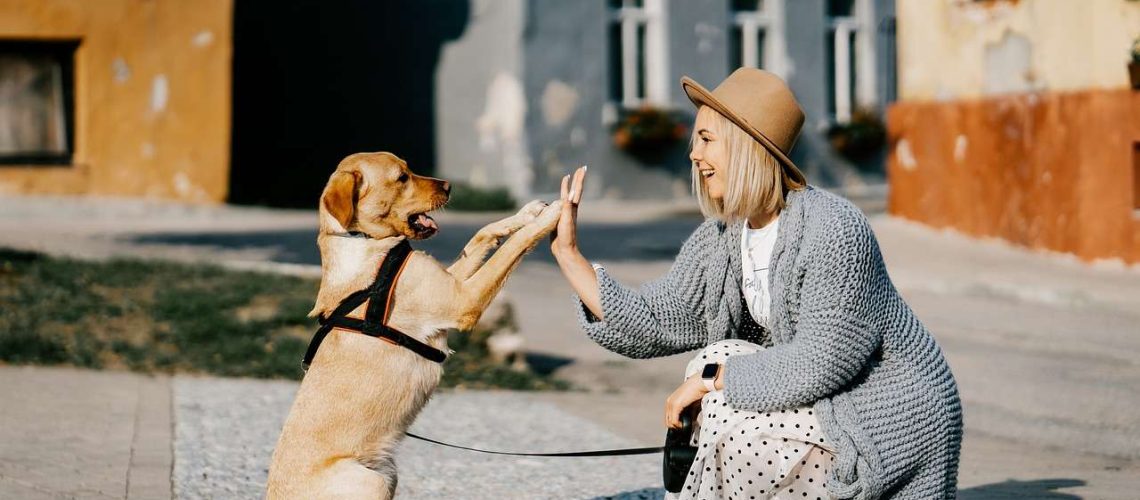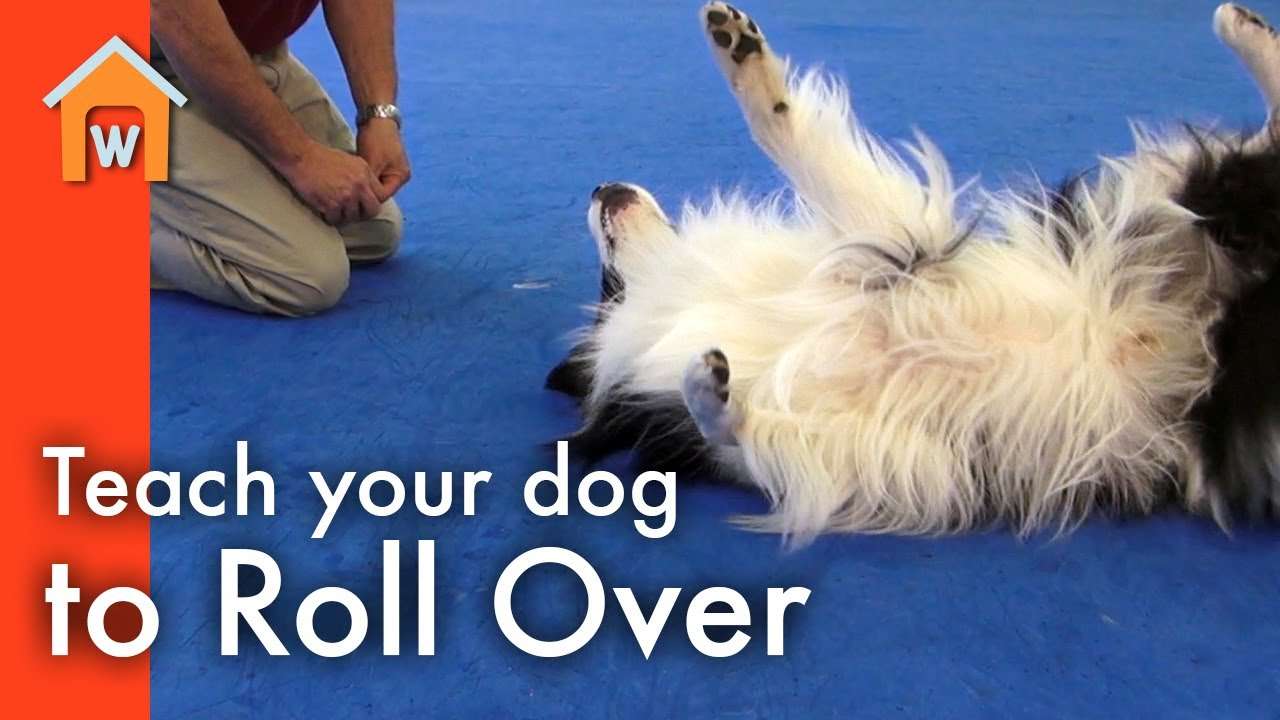Key Takeaways:
- Consistency is key: Training your dog to spin requires consistent cues and rewards. Use the same command and hand signal each time you want your dog to spin.
- Start slow: Begin by luring your dog with a treat in a circular motion, gradually decreasing the size of the circle until your dog completes a full spin. Reward them each time they successfully complete the spin.
- Use positive reinforcement: Reward your dog with treats, praise, and affection when they successfully spin. This will motivate them to continue performing the behavior.
- Practice in different environments: Once your dog has mastered spinning in one location, gradually introduce distractions and practice in different environments to ensure they can perform the behavior anywhere.
- Be patient: Training takes time and every dog learns at their own pace. Stay patient and persistent throughout the training process, celebrating small successes along the way.
Are you tired of your dog just sitting and staying? Do you want to impress your friends and family with some cool tricks? Well, look no further because today we are going to unlock the secret to training your dog to spin! Not only will this trick make your furry friend the star of the show, but it also has numerous benefits for both you and your pet.
How to Train Your Dog to Spin: The First Step
Before you can start teaching your dog to spin, it's important to establish a strong foundation of basic obedience commands. This means that your dog should already be familiar with commands like "sit," "stay," and "come." These commands will serve as building blocks for more advanced tricks like spinning.
To begin training your dog to spin, you'll need a clicker or a verbal marker, such as the word "yes," and some small treats that your dog loves. Start by standing in front of your dog with a treat in your hand. Hold the treat near their nose and slowly move it in a circular motion away from their body. As they follow the treat with their nose, use the clicker or marker word and say "spin" or any other command you choose.
Example:
Tips:
- Be patient and repeat this process several times until your dog starts to understand what you want them to do.
- Keep training sessions short, about 5-10 minutes each, to keep your dog engaged and focused.
Teaching Your Dog to Spin with Treats: A Simple Method
The use of treats is an effective way to motivate and reward your dog during training. To teach your dog to spin using treats, continue holding the treat in your hand and guide them around in a circle. Make sure they follow the treat with their nose as you move it in a circular motion. As they complete the circle, use the clicker or marker word and reward them with the treat.
Repeat this process multiple times, gradually reducing the amount of guidance you provide with the treat. Eventually, your dog will start to understand that they need to spin in a circle to receive their reward. Remember to always use positive reinforcement, praising and rewarding your dog when they successfully spin.
Example:
Tips:
- Start training in a quiet and familiar environment to minimize distractions and help your dog focus on learning the spinning command.
- Use high-value treats that your dog finds especially enticing to increase their motivation during training sessions.
The Importance of a Quiet and Distraction-Free Environment for Training Your Dog to Spin
Creating a quiet and distraction-free environment is crucial when teaching your dog new tricks like spinning. Dogs are easily distracted by noises, movements, or other animals, which can hinder their ability to concentrate on learning commands.
To ensure successful training sessions, find a quiet area in your home or yard where you and your dog can work without interruptions. Close doors and windows if necessary to minimize outside noises. Remove any toys or objects that may distract your dog during training.
Tips:
- Aim for short training sessions of 5-10 minutes each to keep your dog engaged and focused.
- Gradually increase the level of distractions as your dog becomes more proficient at spinning, so they can generalize the command in different environments.
Using Hand Signals to Command Your Dog to Spin: Easy and Effective Techniques
In addition to verbal commands, using hand signals can be a helpful way to communicate with your dog during training. Dogs are visual creatures and can quickly learn to associate specific hand movements with commands.
To teach your dog a hand signal for spinning, start by holding a treat in one hand and making a circular motion with that hand. As you guide your dog around in a circle, use the other hand to give the verbal command "spin." Repeat this process several times until your dog starts to associate the circular hand motion with the command.
Example:
Tips:
- Consistency is key when using hand signals. Always use the same gesture for the spinning command to avoid confusion.
- Practice the hand signal separately from the verbal command until your dog responds reliably to both cues.
How Often Should You Practice Spinning with Your Dog? The Key to Successful Training
The frequency of practice sessions plays an essential role in training your dog to spin successfully. Regular practice helps reinforce their understanding of the command and improves their ability to perform it on cue.
Aim for daily training sessions, but keep them short and engaging. Five to ten minutes of focused practice each day is more effective than longer, sporadic sessions. Consistency is key, so try to establish a routine that works for both you and your dog.
Tips:
- Be patient and understanding. Dogs learn at their own pace, so some may grasp the spinning command quickly while others may take longer.
- Always end training sessions on a positive note with praise and rewards to keep your dog motivated and eager to continue learning.
The Power of Positive Reinforcement in Teaching Your Dog New Tricks like Spinning
Positive reinforcement is a highly effective training method that involves rewarding desired behaviors. When teaching your dog to spin, using positive reinforcement will motivate them to repeat the behavior and strengthen their understanding of the command.
Each time your dog successfully spins on command, immediately praise them with enthusiasm and give them a treat or verbal marker. This positive feedback reinforces their good behavior and encourages them to continue performing the trick. Avoid punishment or harsh corrections, as they can confuse or discourage your dog during the learning process.
Tips:
- Use high-value treats that your dog finds particularly enticing as rewards during training. This will increase their motivation to perform the spinning command.
- Consistency is crucial when using positive reinforcement. Always reward your dog immediately after they successfully spin to reinforce the connection between the behavior and the reward.
Common Challenges in Training Your Dog to Spin and How to Overcome Them
Training your dog to spin may come with some challenges along the way. Understanding these common obstacles and knowing how to overcome them will help you navigate through the training process more effectively.
One challenge you may encounter is your dog getting easily distracted during training sessions. To address this, start training in a quiet environment with minimal distractions, gradually increasing the level of distractions as your dog becomes more proficient at spinning. Additionally, using high-value treats and keeping training sessions short can help maintain their focus.
Another challenge is when your dog doesn't seem motivated or interested in spinning. In such cases, it's essential to reassess the rewards you're using during training. Experiment with different types of treats or toys that excite your dog, and make sure they are hungry before starting a session. If necessary, consult a professional trainer for additional guidance.
Example:
Tips:
- Be patient and persistent. Dogs learn at different paces, so it's important not to get discouraged if progress seems slow.
- Break down the spinning command into smaller steps if your dog is struggling to grasp it. Reward each step towards completing the full spin to build their confidence.
In conclusion, teaching your dog to spin can be a fun and rewarding experience. By using positive reinforcement and patience, you can successfully train your furry friend to perform this impressive trick. Remember to always be consistent and celebrate their progress along the way!
What is the easiest thing to train a dog?
By teaching your dog essential commands like sitting, staying, and recalling, you enable them to enjoy activities they love, such as running freely and accompanying you to socialize, all while ensuring their safety and maintaining control.
Do dogs like to spin?
While spinning is a common behavior in many dogs, some do it due to anxiety or obsessive-compulsive tendencies. According to the Nest, pets may display frustration through repetitive actions. Some dogs may engage in circular walking without any apparent cause, disregard food offerings, or avoid sleep.
Does teaching dog tricks tire them out?
Engaging in brain games and trick training is just as beneficial, if not more, for a dog's happiness and fatigue than physical exercise. Take 10 or 15 minutes to teach your dog new tricks or explore activities such as agility, obedience, or nosework.
Should I be able to feel my dogs spin?
It is normal to be able to feel your dog's spine when running your hands over their back, but the bones should not be sticking out.
Why do dogs circle 3 times?
When dogs turn in circles before lying down, it is a natural instinct for self-preservation. The dog may know that positioning itself in a certain way can help protect against potential attacks in the wild.
Why do dogs like to spin in circles?
Dogs often spin in circles for various reasons, which is considered normal behavior for them. The primary cause of dogs running in circles is their excitement or the need to release tension, which is commonly referred to as zoomies or FRAPs (Frenetic Random Activity Periods).

















